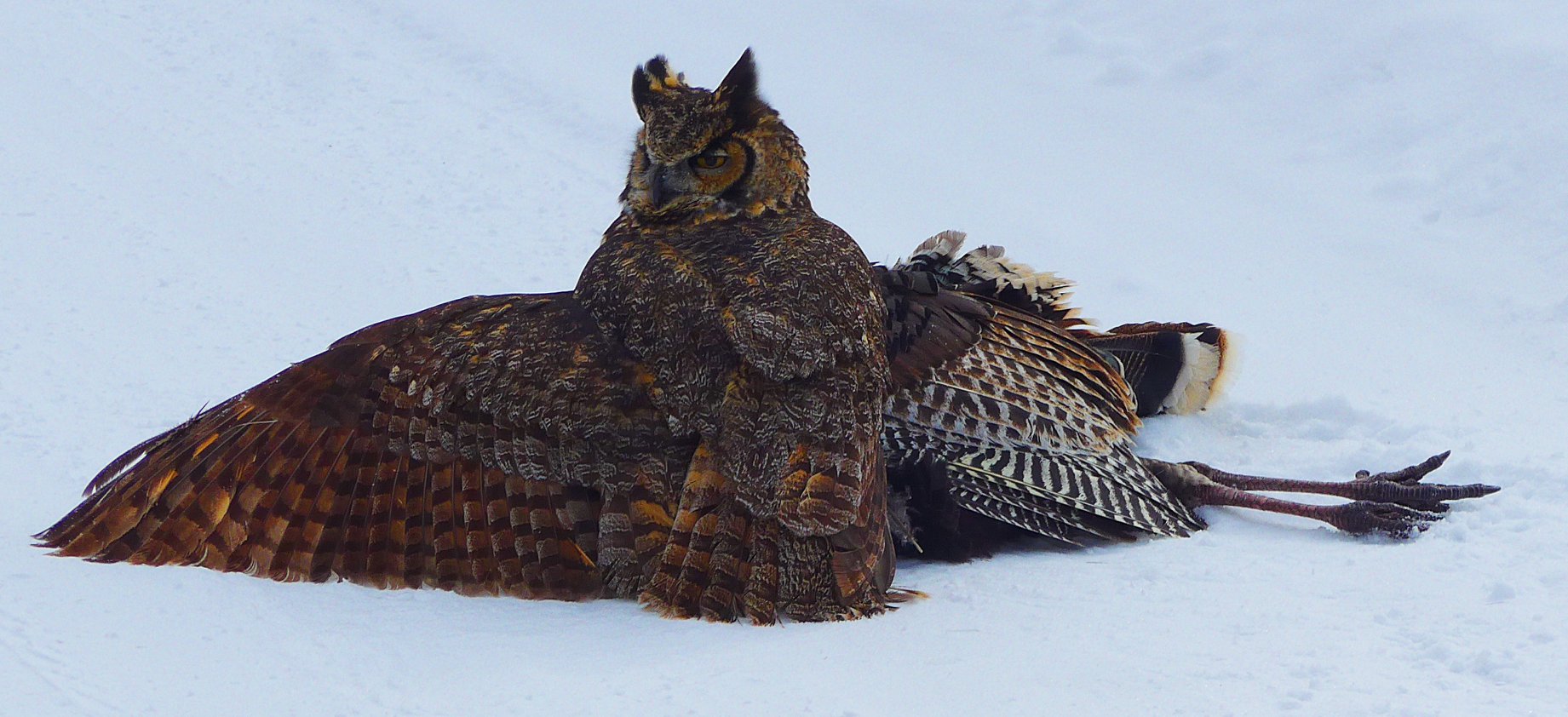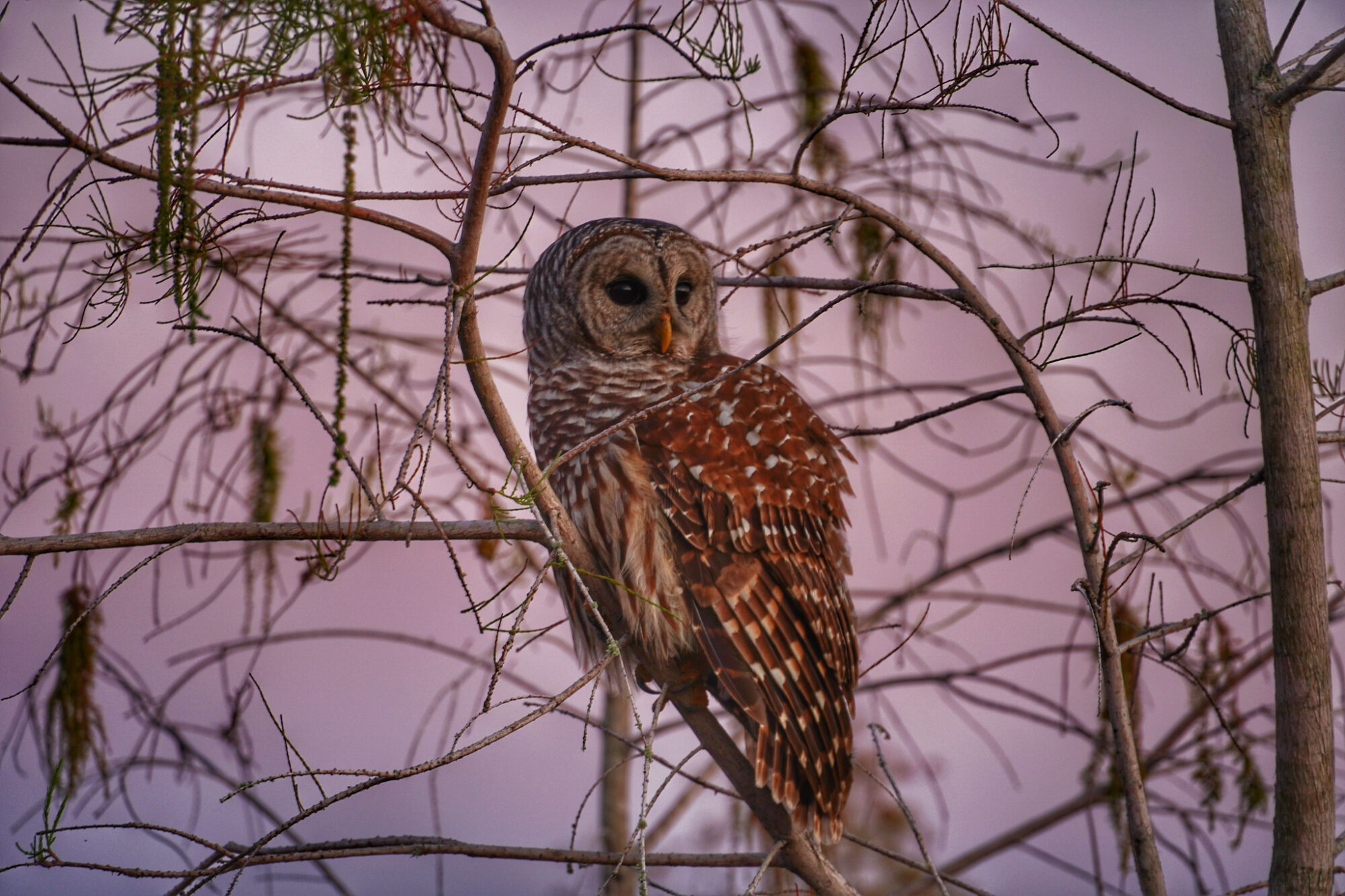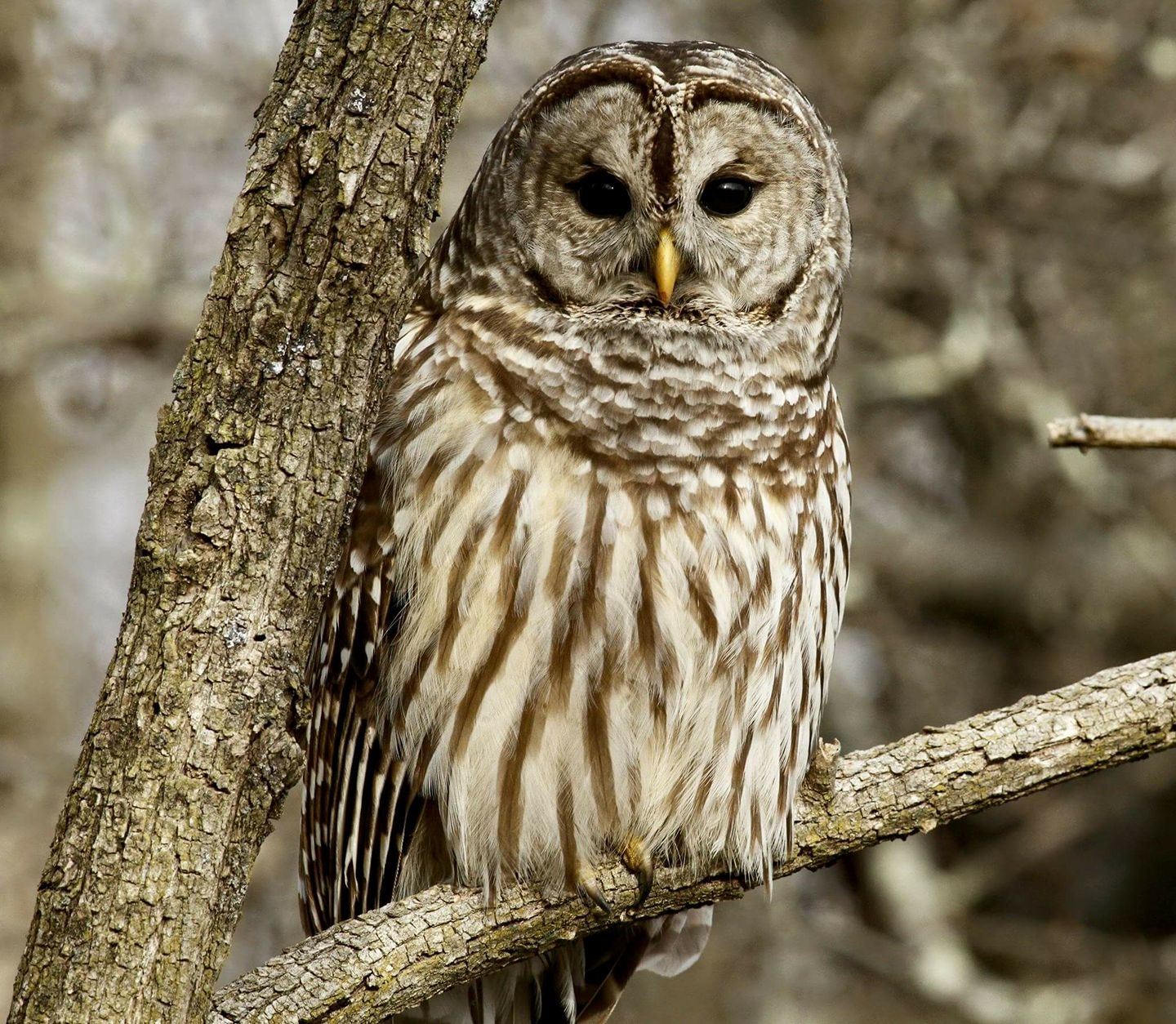Of all the creative ways to strike up a gobble, the owl hoot is a tried-and-true classic. But in all the times you’ve let “who cooks for you” rip, have you ever stopped to wonder why turkeys often gobble in response to owls? Great horned owls have been known to prey on turkeys, so could it just be the gobbler alerting other turkeys to the danger, right?
According to renowned turkey biologist and diehard hunter Dr. Mike Chamberlain, that’s not exactly the case. Here’s some insight into the real reason why turkeys gobble at owls.
Why Do Turkeys Gobble?
Before we can understand why turkeys gobble at owls, it helps to understand why turkeys gobble in general. The primary reason turkeys gobble is to attract attention, Chamberlin says.
“They’re also trying to let each other know [where they are],” Chamberlain tells Outdoor Life. “They’re maintaining their relationships with other males when they gobble. ‘Hey I’m still over here, you can stay over there.’”
Once the gobbler hears a response from other turkeys or other critters in the area, he’ll react accordingly.
“If they know where hens are going to be or they have hens, it doesn’t make any sense for them to gobble once they get on the ground. Most gobbling is supposed to be around the roost site and then they’re supposed to shut up a little bit and not be so obnoxious.”
With this in mind, it makes sense that a tom would gobble at yelping hens or a rival gobbler. But what about gobbling in response to owls, crows, coyotes, or even gun shots?
Chamberlain says that toms will often gobble at those sounds because they fall within the same frequency as a gobble. In other words, a tom is already keyed up and ready to respond to a gobble. When he hears a noise at the same frequency as a gobble, his instinct is to gobble at that sound. It’s not that he’s actually trying to communicate with an owl or crow. Hunters typically call this kind of gobble a shock gobble.
Does Frequency Make Turkeys Gobble at Owls?
Chamberlain led a study that followed GPS-collared gobblers and used microphones attached to trees to record their vocalizations. Through that research he noticed that toms would often gobble at sounds that fell within a certain frequency.
Frequency is another term for pitch. It describes the number of times per second that a sound pressure wave repeats. Lower-pitched sounds are deeper, and fewer sound pressure waves hit the eardrum for the duration of the sound. Higher-pitched sounds are more shrill, and exert more sound pressure waves on the eardrum.
“One of the other things that’s interesting to hunters is how many other sounds are in the same frequency band of a gobble. We record gobbling activity with these remote listening devices. Then we have a machine learning tool that goes through and pulls all the gobbles out. But [that tool] also pulls out other sounds that are in that same frequency because it can’t tell the difference between a gobble and, say, a gunshot,” Chamberlain explains. “A coyote howl, a Canada goose honk, a barred owl, a crow … all these things stimulate a bird to gobble. So it does appear that a lot of the sounds that prompt a bird to gobble [are] in the same frequency.”
The owl hoot that’s passed down from one generation of turkey hunters to the next is meant to imitate a barred owl. The cadence of a barred owl’s call sounds like saying, “Who cooks for you, who cooks for you-all?” This is a rough approximation of the eight-beat sequence of a barred owl’s call.
But turkeys don’t need to worry about barred owls the way they do other owl species. Great horned owls are a verified predator of the wild turkey and won’t hesitate to take one down. Barred owls, not so much. If turkeys were to gobble at owls out of defense against predation, they’d be gobbling at the great horned variety instead.

“Horned owls will kill turkeys. But we’re making barred owl calls. I don’t think they’re adversarial. I think it’s in that frequency band and it prompts them to respond to it,” Chamberlain says. “One of my favorite locator calls is a Canada goose call. And I’m an okay Canada goose caller. I do okay when I goose hunt. I’m certainly not Fred Zink, but I can get by with it and I don’t think the turkeys care.”
Barred Owl Range and Behavior
The barred owl call is so popular among turkey hunters because barred owls have a wide range and are especially vocal during their spring mating season. Their population covers the entire eastern half of the United States and southern Canada, according to the Cornell Lab of Ornithology. In the western part of the continent, they exist in a thin band across the lower half of Manitoba, Saskatchewan, and Alberta before spreading out to populate the eastern half of British Columbia and trickling down into northern Washington and Idaho.

When spring rolls around, barred owl mating behavior gets quite noisy. First, they must find mates, which involves a distinct two-beat answer to the eight-beat “Who cooks for you?” The Owl Foundation describes this replying sound as a “wack-oh” and it might be used to either reply to a nearby competing male or a potential mating female. Then, males and females vocalize together during courtship. In this two-beat vocalization, the second beat rises in pitch from the first just slightly. They steadily repeat this call in a long series. Once mating and hatching is successful, hatchlings are also noisy, whether it’s a hungry yelp or a juvenile attempt at the classic eight-beat hoot.
Does It Matter What Your Owl Hoot Sounds Like?
According to Chamberlain’s research, it doesn’t really matter what your owl hoot sounds like so long as it falls within the same frequency band as a real owl (or a real gobble). When turkeys gobble at owls, they likely aren’t listening to make sure the sound is identical to other hoots. But still, it’s best to sound as realistic as possible in the turkey woods, especially if you’re hunting pressured gobblers. If you can’t make an owl hoot with your voice, there are a variety of owl calls on the market (read our review of the best turkey calls here).
Getting a shock-gobble response from an owl hoot often has less to do with how the hoot sounds and more to do with the hunter’s approach, timing, and patience. When you’re trying to strike toms with an owl hoot, follow these tips:
- Owl hoot first thing in the morning and late in the evening to strike gobblers.
- Owl hooting is most effective during calm conditions.
- First thing in the morning, see if the tom will gobble on his own before hooting at him.
- Try to hoot from about 100 to 200 yards away from where you expect a tom to be roosted.
- Hoot softly at first, in case toms are close by. Then increase volume and aggression.
- Be patient. After owl hooting, wait about 10 minutes before moving on to a new set. Sometimes toms won’t respond right away.
- Stay late when roosting. Hunters often leave too early when trying to roost birds in the evening. Even quiet toms will often gobble after sunset (even if it’s only once).
- Approach quietly. Don’t slam truck doors, step on sticks, or talk loudly when roosting. Get away from roads whenever possible.
- Your hooting might get a response from a real barred owl. Call back to it and work up a commotion. If you hear owls in the distance, call to them. Nothing is better at getting a turkey to gobble than the real thing.

But know that the owl hoot isn’t a silver bullet. Some nights toms won’t respond no matter how good you sound or how sneaky you are in the woods. We might know why turkeys gobble at owls, but unfortunately, there’s no way for us to know why they don’t. Then again, the unpredictability of a wild gobbler is what makes hunting him so fun.
